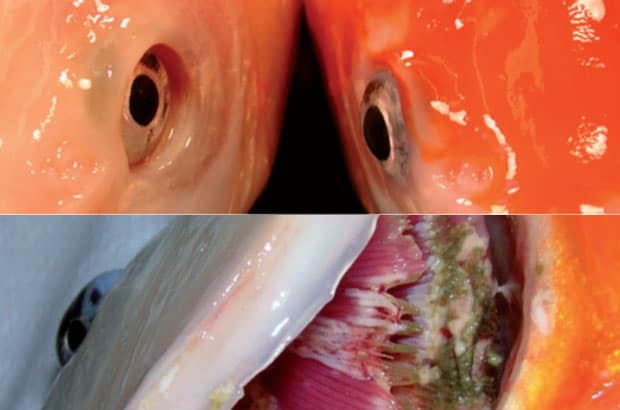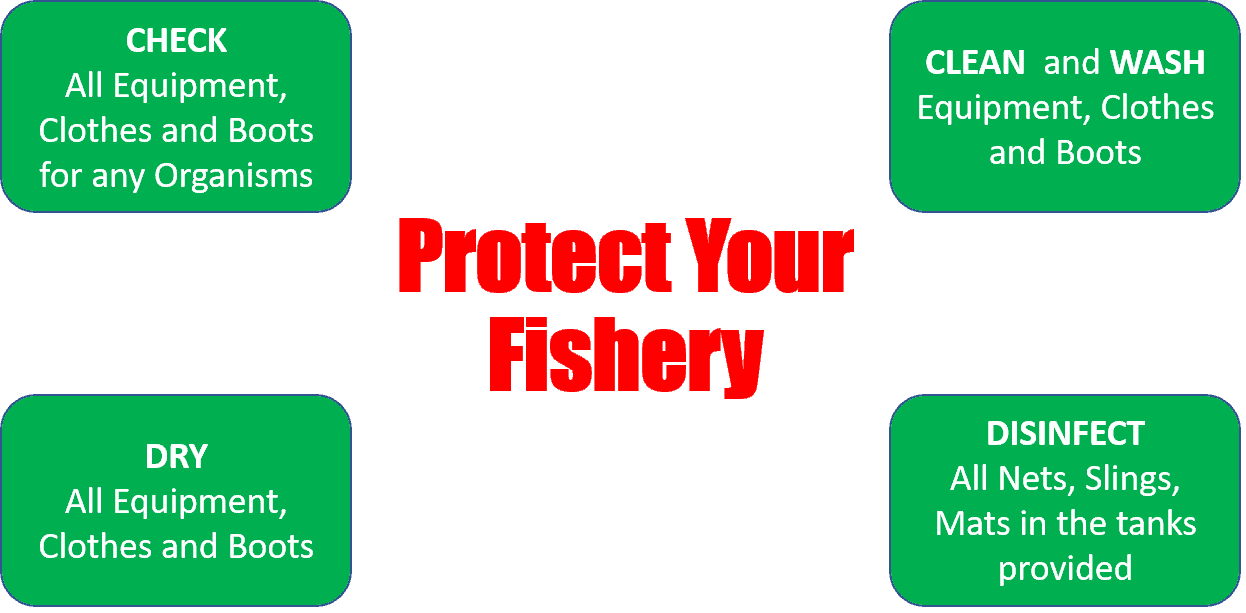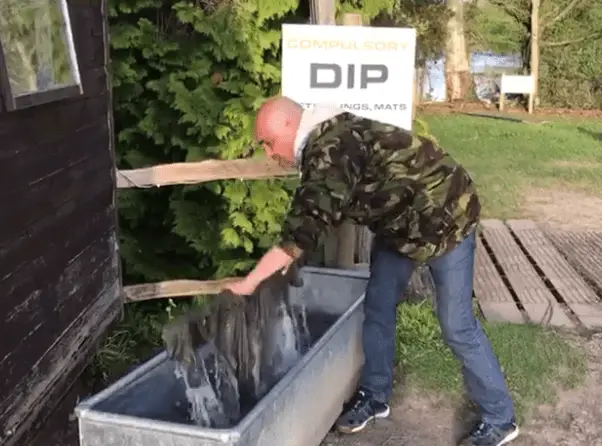Disclosure: Some posts contain affiliate links, which earn us a commission if you make a purchase through them. Positive Fishing © participates in various affiliate networks including the Amazon Services LLC Associates Program.
Koi herpes virus (KHV) is a DNA virus that causes a highly contagious disease in fish. KHV exclusively impacts fish in the Cyprinidae family, including common carp, ghost carp, mirror, and the ornamental variety of the koi carp. It causes significant mortality.
KHV can occur in all freshwater lakes and rivers.
A Brief History Of KHV Disease
The first recognized case of KHV occurred in the UK in 1999. In 2002, the virus was confirmed in several carp fisheries in England. Since then, other cases have been confirmed in almost all countries with culture koi and/or common carp.
While European countries (as well as the US and Canada) are affected, the disease has also been reported in many Asian countries, including Indonesia, Taiwan, China, Thailand, Japan, Korea, Singapore, and Malaysia.
What Are The Other Names Of KHV?
Koi Herpes Virus is the most common name for the disease, but many anglers and fishery owners also call it “fish herpes,” “carp herpes,” or even “fish pox.”
What Factors Cause KHV? How Does It Spread?
The most common concerns are as follows:
- Stress
- Poor water quality
- Fish stocking
- Water temperature
- Overcrowding
- Contamination (from fertilizers and pesticides)
Koi herpes virus disease (KHV) affects fish of all ages. The disease results in 80–100% mortality rates when the water temperature is between 60°-77°F (16°-25 °C). Spring and Autumn are the most common European times for the disease to spread.
KHV stays in the infected fish for life; therefore, fish that recover are considered carriers of the virus.
The process of fish stocking is the most significant risk of introducing the disease to any fishery. Detecting the virus in healthy fish is extremely difficult; it can spread undetected within a few days. Wet fishing tackle, nets, boots, or the transfer of infected water can transmit the virus. Diligent fishery management must be undertaken to minimize the risks of transferring KHV into any fishery.
Fishery owners now typically have a quarantine process before restocking carp. This involves a large tank of 100 gallons or more to store the fish for three weeks before releasing them to the main fishery. This process requires constant temperature monitoring at 70°-78°F (21°-25°C)
Why Is KHV A Major Concern?
KHV outbreaks have caused huge fish stock losses at many fisheries. Therefore, sometimes, the only option is to remove all the fish in the lake. Despite controls, the virus has spread rapidly and is now widespread in England. KHV has never been found in any other species.
What Are The Signs Of KHV?
The fish death rate may begin very rapidly in infected populations, with deaths starting within 24 – 48 hours after the initial signs. In most cases, fish die within the first two weeks. A fish with the infection typically shows spots and patches of red and white gill lesions or bleeding.
It is quite common to find infected carp swimming slowly near the water surface or grouped together close to the margins.

How Do Fish Get Infected With KHV?
The spreading of KHV from the infected fish is often due to handling, fluids from fish, and contact with water and mud. The highly infectious virus transmits to fish through the skin and gill tissue. Survivors of KHV outbreaks usually become carriers of the virus and often can spread the disease to all other fish in the lake. Despite many studies, the transmission to hybrid common carp and other cyprinids or non-cyprinid species to native common carp varieties remains unclear.
Another potential cause is stress. Good fishery management is crucial in reducing disease outbreaks in commercial and syndicate carp fisheries.
Rigid fishery management practices are critical. Fish overcrowding and excessive angling pressure can increase stress within the fish population.
Infections increase when stress impacts the immune response of carp. Studies have proven that KHV outbreaks occur more in intensively managed fisheries with high stocks.
Is There A Cure For KHV?
There is no proven treatment for KHV. Antiviral drugs are not available to treat the disease in fish in a fishery or cultured fish in a pond. Basically, any affected fish will have to use its own defense mechanism to fight the virus itself.
Water temperatures rising or reducing due to weather changes may help to reduce the spread to other fish. However, carrier fish do not die from KHV disease or show signs of infection.
Scientists and laboratories worldwide are continuously studying the virus, searching for an effective treatment.
What Can Anglers Do To Help Reduce KHV?
It is also possible to transfer the virus from wet fishing tackle, nets, and boots or by transferring infected water. The following chart explains what anglers can do to help prevent this dangerous disease from spreading.

Most good fisheries have a disinfectant wash tank. Dipping your nets as you enter the fishery is an important practice.

30 seconds before you start to fish
Always lay out all your nets, mats, cradles, slings, etc., in the sun to dry off any potential bacteria. Do this for at least 20 minutes before you start fishing. This practice is generally mandatory when fishing matches.
When you arrive home after a day of fishing, wash all your relevant equipment with a hosepipe and hang it to dry.
While this is somewhat unproven to help control the issue (based on scientific studies), anglers should at least do whatever they can to protect and reduce the risks. Since many of us visit different lakes and rivers, the risk of transfer is significant.
Can Humans Catch KHV?
The herpes virus causing KHV disease in fish is not transmissible to humans. In fact, it will not affect any other species of fish except the common carp, Ghost Carp, and the ornamental variety of the Koi carp
Summary
Koi herpes virus is a devastating disease of common carp and ornamental koi. Infections can be detected, but no fully effective treatment removes the virus from the fish. Therefore, fishery owners must use the correct management practices, such as quarantine and testing, to prevent the disease from occurring.
KHV is a significant concern, and anglers must play their part in controlling the spread. When you are fishing, please report any suspect fish infections to the attention of the fishery owner or the fishing club bailiffs.
In the UK, a free 24-hour reporting service is available. Call the environment agency’s emergency number at 0800 80 70 60 to report any concerns. In the US, it’s not a reportable disease. However, breeders and stockists should report suspected cases to their state area veterinarian-in-charge (AVIC) where the fish originated.
I hope you found this article helpful. You can read more articles on various topics of fish care, including why scales and slime are crucial for fish.
- 5 Best Fishing Bags For Getting Your Gear Organized - January 13, 2025
- 4 Essential Surf Fishing Rigs - January 11, 2025
- How To Know The Sex Of A Fish You Have Caught? - December 9, 2024

